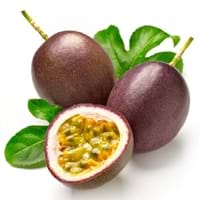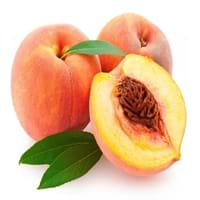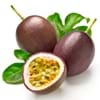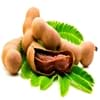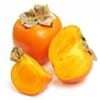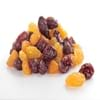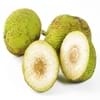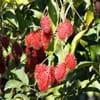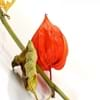Health Benefits
Asthma treatment, Heart care, Regulates Blood Sugar, Muscle pain relief, Reduces nervous tension
Cancer prevention, Heart care, Improves eye vision, Reduces stress, Regulation of heart rate
General Benefits
Boosts immune system, Controls blood pressure, Digestive aid, Fights against infections, Helps in weight loss
Anti oxidant properties, Eye care
Skin Benefits
Anti-aging benefits, Skin revitalization
Heals sunburn, Reduces wrinkles, Treatment of skin diseases
Hair Benefits
Protects hair
Prevents hair loss
Allergy Symptoms
Anaphylaxis, Breathing difficulty, Decrease in blood pressure, Dizziness, Skin rash, Swelling of face, Swelling of mouth, tongue or lips
Abdominal pains, Anaphylaxis, Breathing difficulty, Diarrhea, Dizziness, Hives, Itching, Lightheadedness, Nasal congestion, Nausea, Swelling of mouth, tongue or lips, Tingling sensation in mouth, Vomiting, Wheezing
Side Effects
Stressed heart, Nausea, Vomiting, Possibly unsafe during pregnancy
Allergic reaction
Best Time to Eat
As a snack in the late afternoon, Don't consume at night and before bed, Morning time (before lunch), Strictly avoid empty stomach
As a snack in the late afternoon, Eat the fresh ones, avoid mixing with any other foods, don't eat after meal., Morning time (before lunch)
Vitamin B5 (Pantothenic Acid)
Not Available
Vitamin C (Ascorbic Acid)
Vitamin K (Phyllochinone)
Phytosterol
Not Available
Calories in Fresh Fruit with Peel
Not Available
Calories in Fresh Fruit without Peel
Not Available
Calories in Frozen Form
Not Available
Season
All seasons
Autumn, Summer
Varieties
Australian Purple, Common Purple, Kapoho Selection, Pratt Hybrid, University Selection No. B-74, Waimanalo Selection and Yee Selection
Reliance, Sweet Scarlet, Spring Snow, Sugar May, Santa Rosa, Red Beauty, Glowhaven, Cresthaven and Redhaven Peaches
Color
Purple, Yellow
Pink, Red, White, Yellow, Yellowish-orange
Inside Color
Yellow
Yellow
Origin
Argentina, Brazil, Paraguay
China
Grows on
Not Available
Trees
Soil Type
Sandy loam
Sandy loam, Well-drained
Climatic Conditions
Frost free, Sunny, Warm
Cold, Warm
Facts about
- Passion fruit tree can grow up to 20 feet in a year.
- More than 200 species of passion fruit are found near Amazon river.
- Oil extracted from its seeds is used in various cosmetics.
- In china, peaches are considered as a symbol of good luck.
- From 1982, august is National peach month in USA.
- In roman times, Peaches were also called as Persian apples, as people assumed that they originated from Persia.
Top Producer
Brazil
China
Other Countries
Colombia, Ecuador, Indonesia, Kenya, Peru
Greece, Italy, Spain, United States of America
Top Importer
Brazil
Germany
Top Exporter
Ecuador
Spain
Botanical Name
Passiflora edulis
Prunus persica
Synonym
Passiflora edulis f. edulis or Passiflora edulis f. flavicarpa
Not Available
Subkingdom
Tracheobionta
Tracheobionta
Division
Magnoliophyta
Magnoliophyta
Class
Magnoliopsida
Magnoliopsida
Subclass
Dillenhidae
Rosidae
Order
Malpighiales
Rosales
Family
Passifloraceae
Rosaceae
Species
P. edulis
P. persica
Generic Group
Passion Flower
Rose
Difference Between Passionfruit and Peach
We might think that Passionfruit and Peach are similar with respect to nutritional value and health benefits. But the nutrient content of both fruits is different. Passionfruit and Peach Facts such as their taste, shape, color, and size are also distinct. The difference between Passionfruit and Peach is explained here.
The amount of calories in 100 gm of fresh Passionfruit and Peach with peel is Not Available and 39.00 kcal and the amount of calories without peel is 97.00 kcal and Not Available respectively. Thus, Passionfruit and Peach belong to High Calorie Fruits and Low Calorie Fruits category.These fruits might or might not differ with respect to their scientific classification. The order of Passionfruit and Peach is Malpighiales and Rosales respectively. Passionfruit belongs to Passifloraceae family and Peach belongs to Rosaceae family. Passionfruit belongs to Passiflora genus of P. edulis species and Peach belongs to Prunus genus of P. persica species. Beings plants, both fruits belong to Plantae Kingdom.
